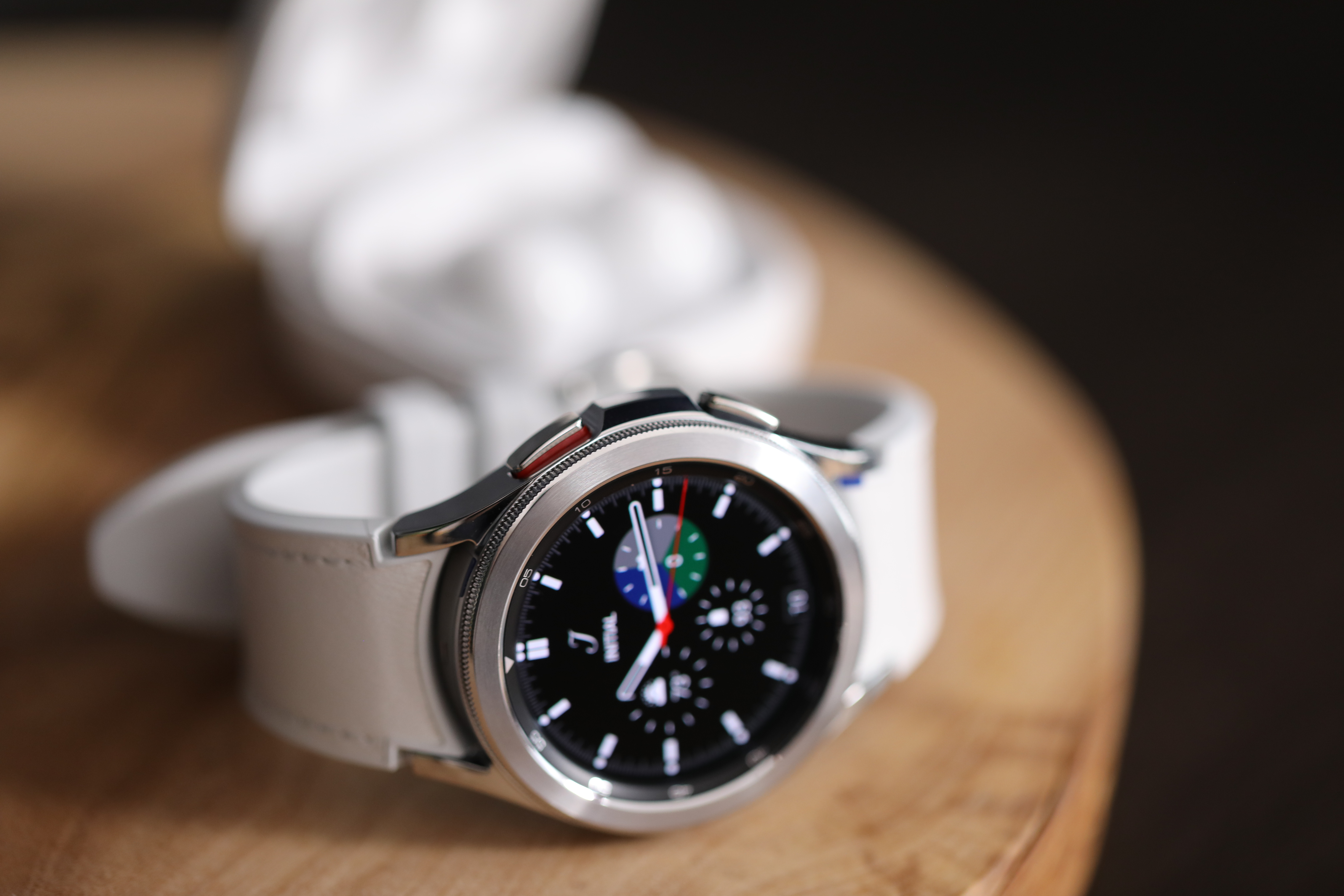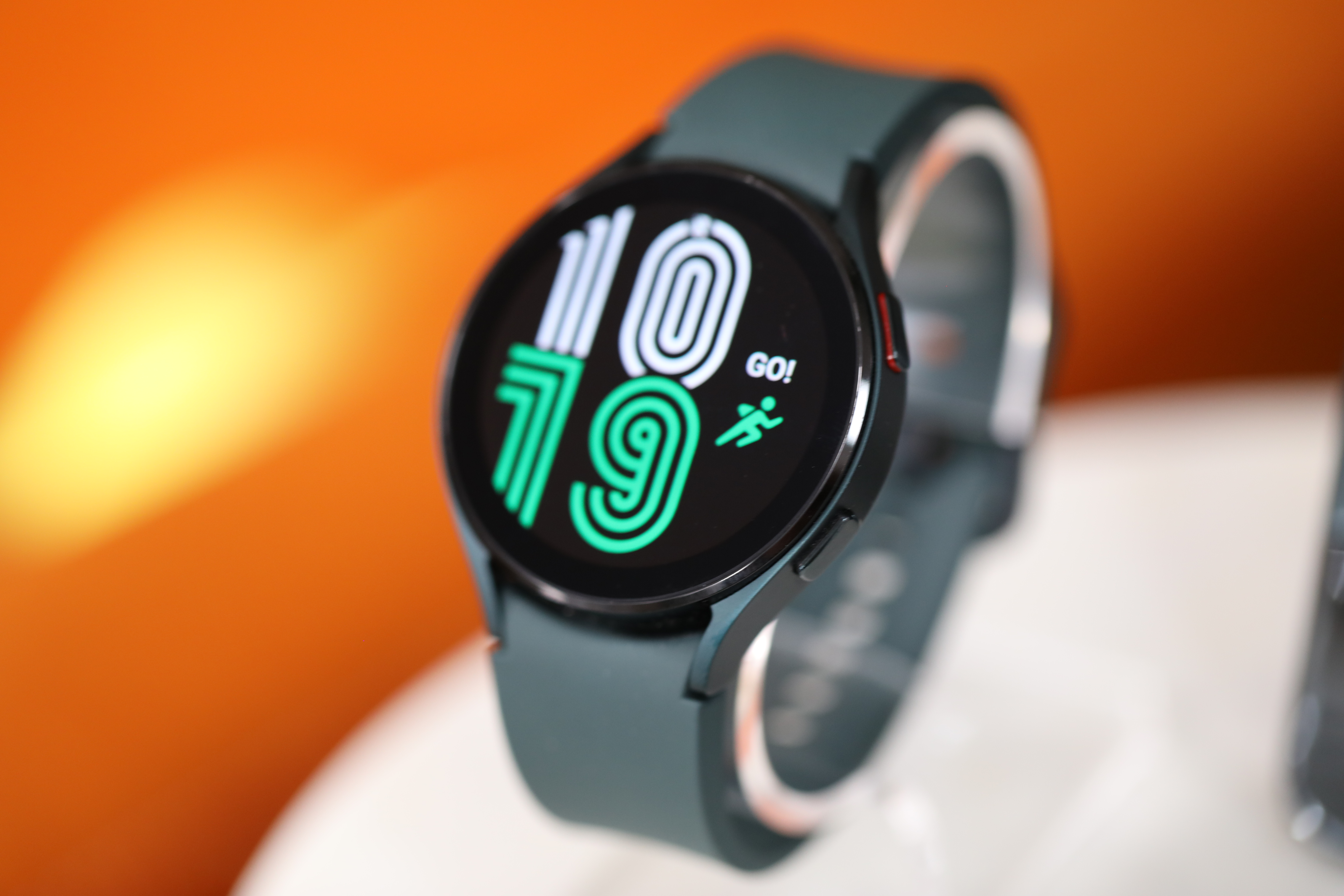Samsung’s watches have long been something of an anomaly. While the company embraced Wear OS (then Android Wear) in its earliest days with the massive Gear Live, the company quickly shifted to Tizen, an open-source operating system largely used by Samsung for wearables and smart TVs.
That’s no doubt been a kind of bugbear for Google, which has long struggled to crack a significant portion of the smartwatch market. Samsung, meanwhile, has had its share of success with its products while doing its own thing. But there’s always more market share to be grabbed.
Third-party apps have long been an issue for basically every smartwatch maker but Apple (it’s the main reason Fitbit bought Pebble, if you’ll recall), and clearly Samsung saw the opportunity in reigniting its partnership with Google. The deal — first mentioned at I/O and discussed more recently at MWC — is now seeing the light of day on the brand new Galaxy Watch 4 and Galaxy Watch 4 Classic.
Image Credits: Brian Heater
The companies refer to it as “the new Wear OS Powered by Samsung.” What that means, practically, is that Wear OS serves as the code base. Design and other elements of Tizen exist in here, but for all practical intents and purposes, it’s a custom built version of Google’s wearable operating system, which Samsung helped build out.
Samsung and Google preview wearable platform ahead of next Galaxy Watch launch
The company will stress that latter bit as an important bit of clarification — that it didn’t just slap a new coat of paint on the OS here. The company’s One UI Watch sits atop all of that, in a bid to create a unified user experience across Samsung’s mobile devices and wearable line.
Per a release:
Galaxy Watch 4 Series is also the first generation of smartwatches to feature Wear OS Powered by Samsung — a new platform that elevates every aspect of the smartwatch experience. Built by Samsung and Google, this cutting-edge platform lets you tap into an expansive ecosystem right from your wrist — with popular Google apps like Google Maps, and beloved Galaxy services, like Samsung Pay, SmartThings and Bixby. The new platform also includes support for leading third-party apps, like Adidas Running, Calm, Strava and Spotify.
In a blog post this morning, Google breaks down its end of the partnership thusly,
We’re taking what we’ve learned from Wear OS and Tizen to jointly build what smartwatch users need. Compared to previous Wear OS smartwatches, the Galaxy Watch4 features a 2.5x shorter set up experience, up to 40 hours of battery life, optimized performance with app launch times 30 percent faster than before and access to a huge ecosystem of apps and services.
And there are more ways to get more done from your wrist with Wear OS. We’re introducing more capabilities and a fresh new look based on Material You design language for Google Maps, Messages by Google and Google Pay apps as well as launching a YouTube Music app. There are also new apps and Tiles coming to Wear OS for quicker access to your favorites.
The software giant singles out turn-by-turn directions on Google Maps, the ability to download and listen to songs on YouTube Music and improved app discovery via Google Play. The news also finds Google Pay on Wear OS coming to 16 additional countries, including Belgium, Brazil, Chile, Croatia, Czech Republic, Denmark, Finland, Hong Kong, Ireland, New Zealand, Norway, Slovakia, Sweden, Taiwan, Ukraine and United Arab Emirates.
The other key focus on the line continues to be health — it’s the field on which all smartwatches are currently competing. The monitoring is built around a smaller version of the company’s BioActive Sensor, which measures optical heart rate, electrical heart (ECG) and Bioelectrical Impedance Analysis. The trio of sensors measure a bunch of different metrics, including blood pressure, AFib monitoring, blood oxygen and now body composition/BMI. So now, for better or worse, your watch will tell you your body fat percentage [post-pandemic grimace face emoji]. Says Samsung, “In about 15 seconds, your watch’s sensor will capture 2,400 data points.”
Image Credits: Brian Heater
Design is the primary distinction between the two models. The Galaxy Watch 4 is the thinner and lighter of the two — more in line with the Galaxy Watch Active. It sports a touch bezel, versus the Classic’s physical spinning bezel — arguably Samsung’s best innovation in the category.
Also, of note: Both models come in two sizes. That’s always been a bit of a sticking point for me on Samsung Watches. If your devices are large and only come in the one size, you’re essentially knocking out a sizable portion of your customer base right off the bat. The Watch 4 comes in 40mm and 44mm and the Classic is available in 42mm and 46mm. The models start at $250 and $350, respectively. Another $50 will get you LTE connectivity.
The watches go up for preorder today and start shipping on August 26. Preordering will get you a $50 Samsung Credit. The company is also launching a limited-edition Thom Browne version of the Classic in September, which will almost certainly cost an arm and/or leg.
Google and Samsung are teaming up to take on Apple’s watchOS
